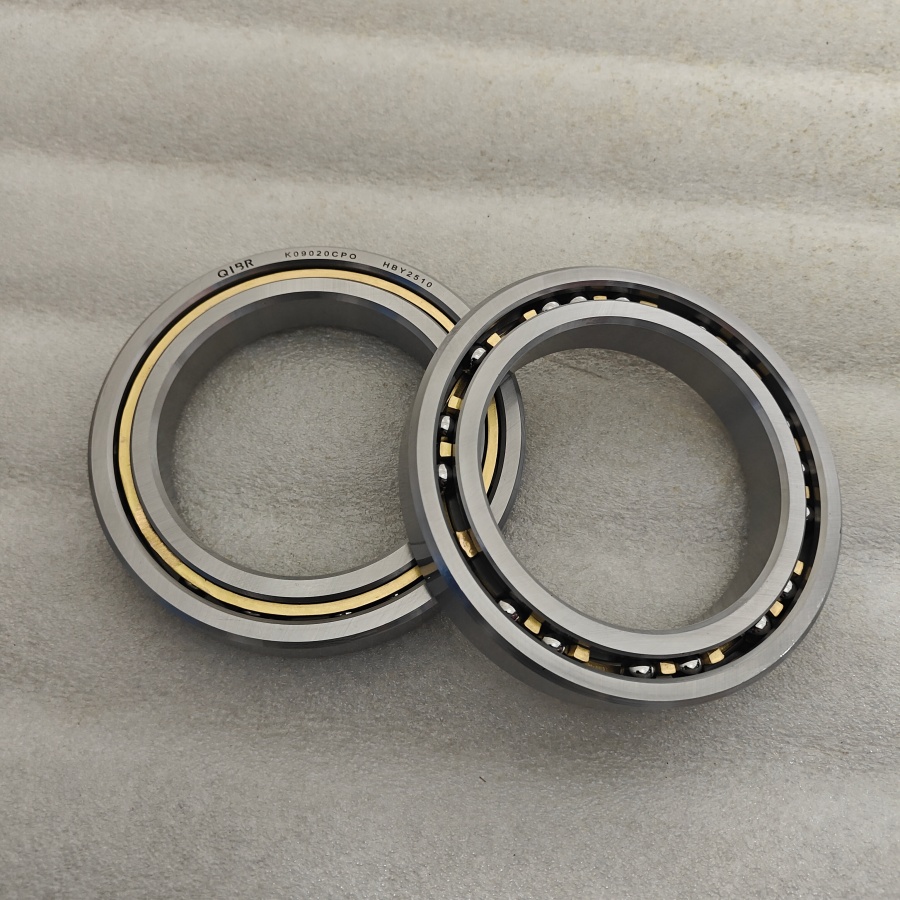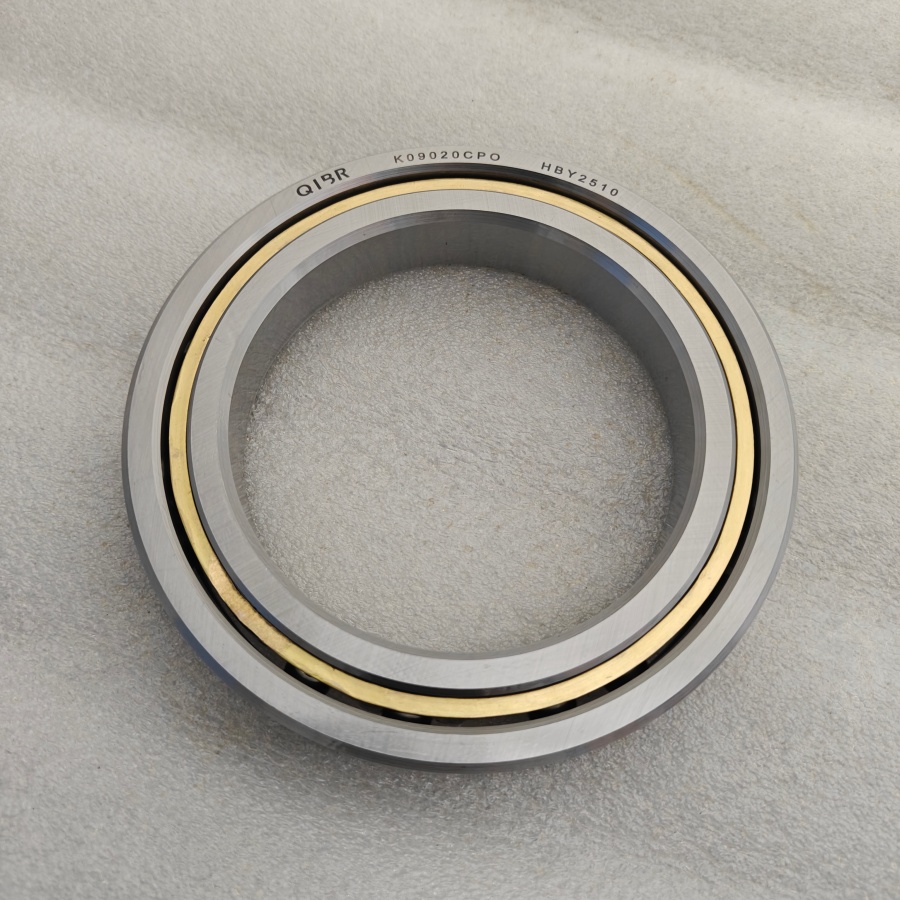Newsroom
The K09020CP0 Bearing: A Reliable Precision Component for Industrial Applications
In the complex ecosystem of industrial machinery, precision bearings serve as the "joints" that enable smooth rotation, reduce friction, and ensure operational stability. Among these critical components, the K09020CP0 bearing stands out as a versatile and dependable option, designed to meet the demands of medium-load, precision-focused applications. This article explores its structural design, key specifications, application scenarios, performance advantages, and maintenance requirements, shedding light on why it remains a popular choice for engineers and manufacturers worldwide.
1. Product Overview and Structural Design
The K09020CP0 is classified as a single-row angular contact ball bearing—a type engineered to handle both radial (radial) and axial (thrust) loads simultaneously. Its structural design is optimized for balance and precision, consisting of four core components:
Inner and Outer Races: Typically crafted from high-carbon chromium bearing steel (SUJ2 or equivalent), these races feature a precision-ground groove that holds the steel balls. The material’s high hardness (HRC 58–62) ensures wear resistance and long service life.
Steel Balls: Made from the same high-grade steel as the races, the balls are precision-polished to minimize surface roughness. Their uniform size and roundness directly impact the bearing’s rotational accuracy and noise levels.
Cage: Usually constructed from polyamide (nylon) or steel, the cage separates and guides the steel balls, preventing friction between adjacent balls. Polyamide cages are preferred for low-noise, high-speed applications, while steel cages excel in high-temperature environments.
Contact Angle: A defining feature of angular contact bearings, the K09020CP0 typically has a contact angle of 15° or 25° (depending on the manufacturer’s design). This angle determines the bearing’s axial load capacity—larger angles prioritize axial load handling, while smaller angles favor radial performance.

2. Key Technical Specifications
Understanding the K09020CP0’s technical parameters is essential for selecting it for the right application.
3. Application Scenarios
The K09020CP0’s balanced load capacity, compact size (9x20x6 mm), and P0 precision make it ideal for applications where space is limited and moderate precision is required. Key use cases include:
3.1 CNC Machine Tools
Small CNC lathes, milling machines, and engraving machines rely on the K09020CP0 for their spindle or feed shaft systems. Its ability to handle combined radial and axial loads ensures stable cutting performance, while its moderate speed rating (18,000 rpm) aligns with the rotational needs of small to medium-sized spindles.
3.2 Electric Motors and Pumps
Miniature electric motors (e.g., those in household appliances, medical devices, or automotive auxiliary systems) use the K09020CP0 to support their rotating shafts. The bearing’s low friction and noise levels help improve motor efficiency and reduce operational sound—critical for devices used in quiet environments (e.g., medical pumps).
3.3 Precision Transmission Systems
Timing belt pulleys, gearboxes, and linear actuators in robotics or automation equipment often integrate the K09020CP0. Its compact width fits into tight mechanical assemblies, while its load capacity ensures reliable power transmission between components.
3.4 Aerospace and Medical Devices
In lightweight aerospace components (e.g., small sensors) or medical equipment (e.g., dental drills), the K09020CP0’s high material strength and precision meet strict industry standards. For high-temperature medical applications (e.g., sterilizable devices), steel-cage variants of the bearing are preferred to withstand autoclave cycles.
4. Performance Advantages
Compared to other bearings in its size class, the K09020CP0 offers several competitive advantages:
Balanced Load Handling: Unlike deep-groove ball bearings (which excel at radial loads but struggle with axial loads), the K09020CP0’s angular contact design makes it suitable for applications with combined radial and axial forces—reducing the need for multiple bearing assemblies.
Cost-Effectiveness: As a P0-class bearing, it provides sufficient precision for most industrial uses at a lower cost than higher-precision grades (P5/P4). This makes it a cost-efficient choice for small and medium enterprises (SMEs) or non-critical components.
Versatility: Its wide operating temperature range (-30°C to +120°C) and compatibility with both grease and oil lubrication allow it to adapt to diverse environments, from cold storage facilities to high-temperature industrial plants.
Long Service Life: The high-carbon chromium steel construction and precision manufacturing minimize wear and fatigue. When properly installed and maintained, the K09020CP0 can achieve a service life of 5,000–10,000 operating hours—exceeding the lifespan of lower-quality bearings.

5. Installation and Maintenance Best Practices
To maximize the K09020CP0’s performance and lifespan, proper installation and maintenance are critical:
5.1 Installation Guidelines
Shaft and Housing Fit: Ensure the shaft (inner race fit) and housing (outer race fit) have the correct tolerance (typically H7 for the housing and js6 for the shaft). Over-tight fits can cause internal stress, while loose fits lead to vibration and premature wear.
Axial Preloading: For applications requiring high rigidity (e.g., CNC spindles), apply a small axial preload to eliminate internal clearance. This reduces vibration and improves rotational accuracy but should not exceed 10% of the bearing’s static load rating (C0).
Alignment: Misalignment between the shaft and housing (radial or angular) can increase friction and damage the bearing. Use precision tools (e.g., dial indicators) to ensure alignment within 0.1 mm for radial offset and 0.5° for angular offset.
5.2 Maintenance Tips
Lubrication: Re-lubricate the bearing every 2,000–3,000 operating hours (or as per the manufacturer’s recommendation). Use lithium-based grease for general applications or high-temperature grease (e.g., polyurea-based) for temperatures above 100°C. Avoid over-lubrication, which can cause heat buildup.
Cleaning: Before re-lubrication or inspection, clean the bearing and its surrounding area with a non-corrosive solvent (e.g., isopropyl alcohol) to remove dirt, old grease, and debris. Never use water-based cleaners, as they can cause rust.
Regular Inspection: Check for signs of wear (e.g., abnormal noise, vibration, or temperature rise) during operation. If the bearing reaches 80% of its estimated service life, replace it proactively to avoid unexpected downtime.
6. Market Value and Future Trends
In today’s industrial landscape, the demand for compact, reliable bearings like the K09020CP0 is growing—driven by trends such as miniaturization (e.g., smaller electronics and medical devices) and industrial automation (e.g., robotics and smart factories). Manufacturers are also innovating to enhance the bearing’s performance, with ongoing developments in:
Material Science: The use of ceramic balls (e.g., silicon nitride) to reduce weight, increase speed, and improve corrosion resistance—ideal for harsh environments like marine or chemical processing.
Eco-Friendly Lubrication: The adoption of biodegradable greases to meet environmental regulations, particularly in automotive and food processing industries.
Smart Monitoring: Integrating sensors into the bearing to track temperature, vibration, and load in real time—enabling predictive maintenance and reducing unplanned downtime.
Conclusion
The K09020CP0 bearing may be small in size, but its role in industrial machinery is indispensable. Its balanced load capacity, cost-effectiveness, and versatility make it a go-to choice for applications ranging from CNC machines to medical devices. By understanding its specifications, following proper installation and maintenance practices, and leveraging emerging innovations, engineers and manufacturers can unlock the full potential of this precision component—ensuring smooth, reliable, and efficient operation of their equipment for years to come.


